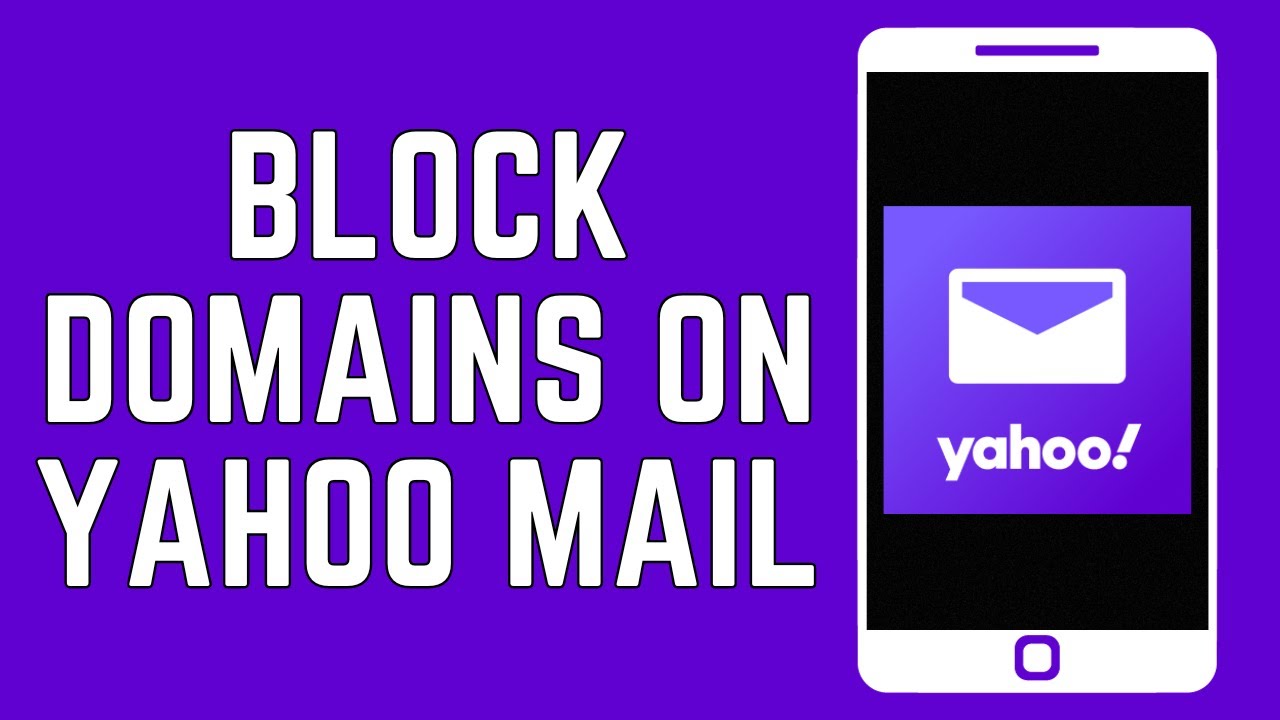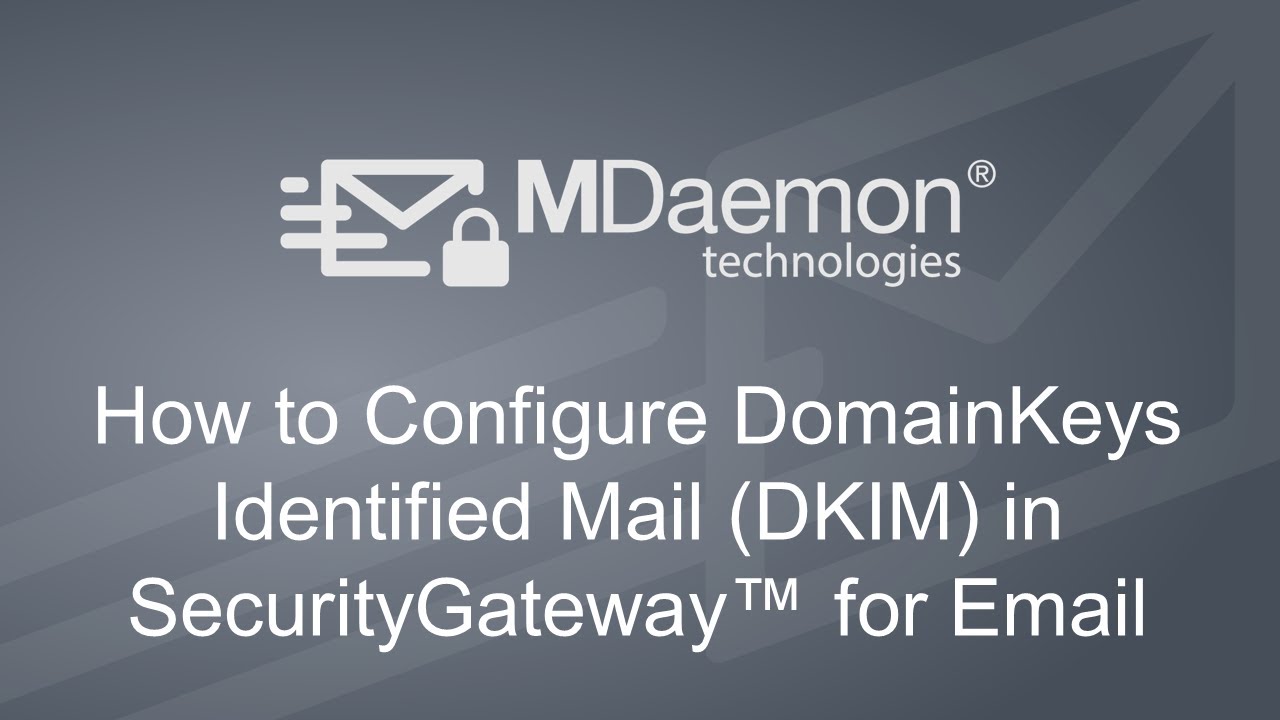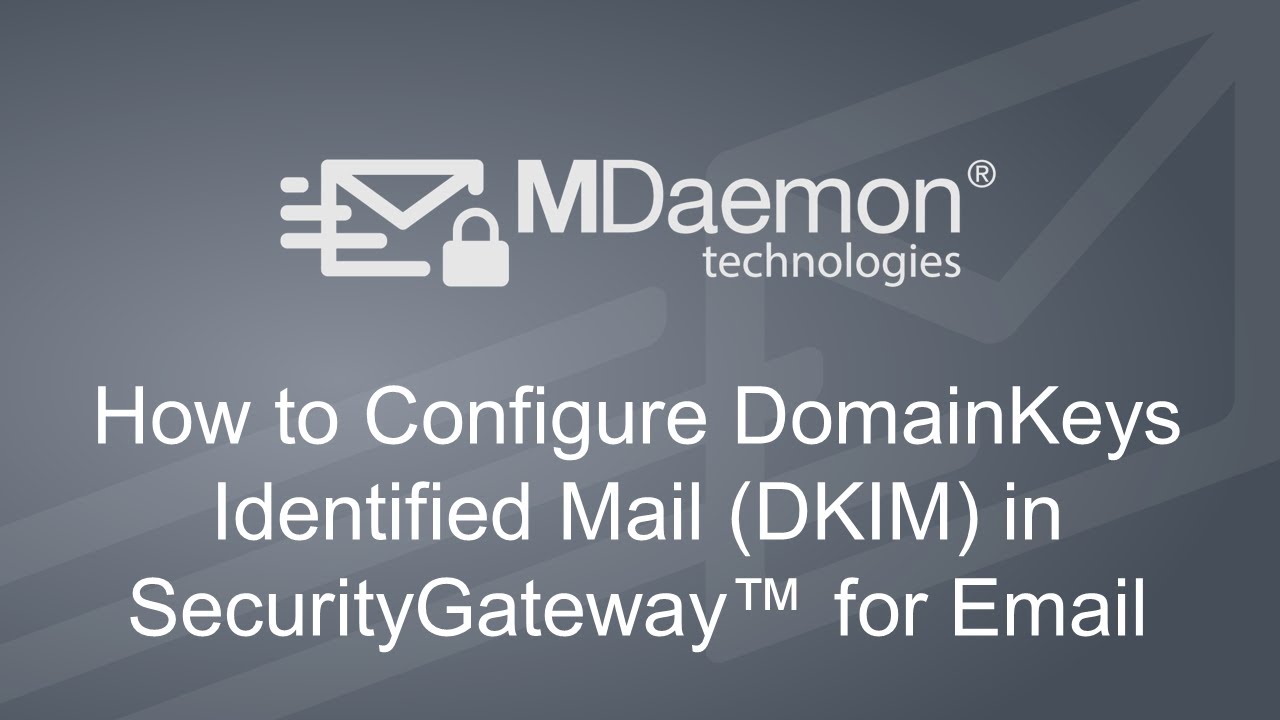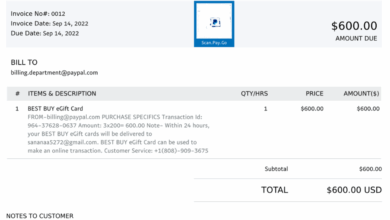Yahoos DomainKeys Anti-Spam Standard
Yahoo offers up domainkeys as antispam standard – Yahoo offers up DomainKeys as an anti-spam standard, a significant step in email security. This innovative approach uses DomainKeys Identified Mail (DKIM) to authenticate emails, making it harder for spammers to impersonate legitimate senders. This change could dramatically impact email deliverability and recipient trust, leading to a safer online environment for everyone. We’ll explore the technical details, Yahoo’s rationale, and the potential implications for email security as a whole.
DomainKeys Identified Mail (DKIM) is a critical email authentication method that verifies the sender’s identity. It adds a digital signature to emails, allowing recipients to confirm that the email originated from the claimed sender and hasn’t been tampered with. This system helps fight spam and spoofing by associating the email with its actual domain, preventing malicious actors from forging email addresses.
Introduction to DomainKeys

DomainKeys Identified Mail (DKIM) is a crucial email authentication method that helps protect against email spoofing and phishing attacks. It’s a way to verify that an email message truly originated from the sender’s domain, adding an extra layer of trust and security to the communication process. This verification process significantly enhances the reliability of email communications.DKIM works by using digital signatures to authenticate email messages.
These signatures are generated by the sender’s mail server, attached to the email’s headers, and validated by the recipient’s mail server. This ensures the integrity of the email content and prevents malicious actors from forging sender identities. It’s a vital component in maintaining the integrity of online communications.
How DomainKeys Works
DomainKeys leverages public-key cryptography to verify the authenticity of emails. The sender’s mail server creates a cryptographic key pair (a public and a private key). The private key is kept secure on the sender’s server, while the public key is distributed through DNS records. When a message is sent, the sender’s mail server signs the message using the private key.
This digital signature is then embedded within the email headers. The recipient’s mail server retrieves the public key from the DNS record associated with the sender’s domain. Using this public key, the recipient’s server verifies the signature. If the signature is valid, it confirms the email originated from the claimed domain, and the email is considered authentic.
Yahoo’s recent push for DomainKeys as an anti-spam standard is a crucial step, but the sheer speed of the SoBig F variant’s spread, as seen in the spreading SoBig F variant fastest outbreak ever , highlights the ongoing need for robust defenses. Even with improved authentication methods, spammers are constantly adapting. Hopefully, these advancements in email security will keep pace with evolving threats.
Benefits of Using DomainKeys
DomainKeys offers significant advantages in enhancing email security and combating spam. It significantly reduces the risk of email spoofing, which is a major concern for organizations and individuals alike. By verifying the sender’s identity, DKIM helps protect users from receiving fraudulent or malicious emails. The authentication process ensures that the message hasn’t been tampered with during transit. This trust factor is crucial for preventing phishing scams and other forms of email-based fraud.
It also allows for a more accurate assessment of the sender’s reputation.
Technical Components of DKIM Implementation
Implementing DKIM involves several key technical components. These components are critical for successful authentication and verification. A crucial aspect is the creation and management of the cryptographic key pair. The public key must be published in a specific DNS record (typically a TXT record) associated with the sender’s domain. This DNS record is essential for the recipient’s mail server to access and verify the public key.
The sender’s mail server must also be configured to sign outgoing emails with the private key. This requires specific configuration and setup on the email server. Lastly, the recipient’s mail server must be configured to validate the DKIM signature. This ensures proper communication and authentication.
Comparison of Email Authentication Methods
| Feature | DomainKeys (DKIM) | Sender Policy Framework (SPF) | Domain-based Message Authentication, Reporting & Conformance (DMARC) |
|---|---|---|---|
| Mechanism | Digital signatures based on public-key cryptography | DNS-based records defining authorized mail servers | Policy framework that combines DKIM and SPF |
| Focus | Authenticating the sender’s identity and message integrity | Verifying the sender’s mail server | Enforcing policies for sender authentication and reporting |
| Strength | High assurance of message origin and integrity | Good for preventing spoofing from unauthorized mail servers | Strongest protection by combining DKIM and SPF and enabling reporting |
| Complexity | Moderate, requiring key management and server configuration | Relatively simple, primarily DNS configuration | Moderate, requiring policy configuration and setup |
This table provides a concise overview of the key differences and similarities among the three authentication methods. Each method plays a distinct role in enhancing email security, and their combined use often provides the most robust protection against malicious actors.
Yahoo’s Adoption of DomainKeys
Yahoo’s announcement regarding DomainKeys marked a significant step in bolstering email security. The company’s proactive approach to implementing this anti-spam standard reflects a growing recognition of the escalating threat of phishing and spam in the digital age. This decision, while not groundbreaking in the sense of pioneering the technology, demonstrates a commitment to a more secure email ecosystem.Yahoo’s adoption of DomainKeys was driven by a desire to mitigate the growing problem of spam emails.
This involved the implementation of a system that validates the authenticity of incoming emails. By verifying the origin of emails, Yahoo could more effectively filter out messages originating from sources that didn’t possess the required digital signatures. This action aims to improve the user experience by reducing the volume of unwanted emails and bolstering the reliability of legitimate communication.
Yahoo’s Announcement Regarding DomainKeys
Yahoo publicly announced their commitment to implementing DomainKeys as part of their broader anti-spam strategy. This announcement highlighted their dedication to providing a more secure email environment for their users. The statement emphasized the importance of combating the proliferation of spam and phishing emails.
Rationale Behind Yahoo’s Decision
Yahoo’s decision to adopt DomainKeys stemmed from the escalating threat of spam and phishing. The growing volume of fraudulent emails targeting users necessitates robust security measures. DomainKeys, by authenticating email senders, reduces the risk of users receiving spoofed or malicious emails. This proactive approach strengthens the overall email security ecosystem and improves the user experience.
Impact of Yahoo’s Adoption on Email Security
Yahoo’s adoption of DomainKeys has a ripple effect on email security for other users and providers. By implementing a robust authentication mechanism, Yahoo sets a precedent for other providers to follow. This encourages a broader adoption of DomainKeys, which ultimately enhances the security posture of the entire email ecosystem. Increased adoption leads to a decrease in spam and phishing emails, making the online environment safer for everyone.
Comparison with Other Email Providers’ Implementations
While many email providers have implemented DomainKeys, the specifics of implementation can vary. Some providers may have more stringent verification policies, while others might prioritize specific use cases. Yahoo’s approach, similar to others, emphasizes the verification of the sender’s domain, but details of their specific implementation remain confidential.
Timeline of Yahoo’s DomainKeys Adoption
| Milestone | Date | Description |
|---|---|---|
| Initial Announcement | [Date of Announcement] | Yahoo publicly declares their commitment to implementing DomainKeys. |
| Implementation Phase 1 | [Date] | The initial rollout of DomainKeys across Yahoo’s email infrastructure. |
| Implementation Phase 2 | [Date] | Further refinement and expansion of DomainKeys integration. |
| Ongoing Maintenance | [Ongoing] | Continuous monitoring and updates to maintain DomainKeys effectiveness. |
This table illustrates a general timeline. Specific dates for each phase might not be readily available in public documents.
Implications for Email Security
DomainKeys, as a cornerstone of email authentication, significantly impacts email security. It’s a crucial step in combating the pervasive problem of email spoofing, a tactic used by spammers and malicious actors to masquerade as legitimate senders. By verifying the authenticity of email messages, DomainKeys strengthens the trust in the communications we receive.The adoption of DomainKeys directly affects the overall security posture of email systems.
Yahoo’s recent push for DomainKeys as an anti-spam standard is a fascinating development. It highlights the ongoing struggle against unwanted email, a problem that’s been around for ages. This approach, while useful, might be viewed as a stop-gap measure in the face of increasingly sophisticated phishing and spam tactics. Considering the broader context of authentication, like Microsoft Passport and the future of authentication, microsoft passport and the future of authentication presents an interesting alternative.
Ultimately, though, DomainKeys remains a crucial step in the fight against the ever-evolving digital threats.
This is particularly important for businesses and organizations that rely heavily on email communication, as compromised emails can lead to identity theft, phishing scams, and other forms of malicious activity.
Strengthening Email Security Against Spoofing and Spam
DomainKeys achieves this by associating a digital signature with each email message. This signature is unique to the sender’s domain, allowing recipients to verify the message’s origin and ensure it hasn’t been tampered with during transit. This crucial verification step is a powerful tool in the fight against spam. By using DomainKeys, email providers can identify and filter out spoofed messages, thus reducing the likelihood of spam reaching inboxes.
Yahoo’s recent move to adopt DomainKeys as an anti-spam standard is a significant step, mirroring similar efforts in other sectors. This proactive approach to email security is crucial in today’s digital landscape. Interestingly, Symantec’s acquisition of SafeWeb for SSL VPN technology ( symantec acquires safeweb for ssl vpn technology ) highlights a broader trend of companies investing in robust security solutions.
Ultimately, initiatives like Yahoo’s DomainKeys adoption are essential for maintaining a secure and reliable online environment.
Impact on Email Deliverability
DomainKeys plays a significant role in email deliverability. Email providers prioritize messages from verified senders. When an email is signed with DomainKeys, it provides proof of legitimacy to the receiving server. This validation process helps to ensure that emails are not misclassified as spam. This positive reputation, built on the trust established by DomainKeys, is essential for email to reach the intended recipients’ inboxes.
Senders with good DomainKeys practices experience improved deliverability rates, as their emails are less likely to be flagged as spam.
Improvements to Email Reputation Management
DomainKeys contributes significantly to email reputation management. A sender’s reputation is a crucial factor in email deliverability. DomainKeys helps to build a positive reputation for senders by verifying the origin and authenticity of their messages. Consistent use of DomainKeys results in a better email reputation for the sender, which leads to more emails being delivered successfully. Email providers use this reputation score to decide how trustworthy a sender is, determining whether emails are delivered or marked as spam.
Potential Challenges Associated with Widespread Adoption of DomainKeys
While DomainKeys offers significant advantages, there are potential challenges associated with its widespread adoption. One challenge is the initial setup and configuration, requiring adjustments to existing email infrastructure. Another concern is the need for cooperation and standardization among email providers. A lack of interoperability could hinder the full benefits of DomainKeys.
Summary Table: Benefits and Challenges of DomainKeys
| Stakeholder | Benefits | Challenges |
|---|---|---|
| Senders | Improved deliverability, enhanced sender reputation, reduced spam complaints. | Initial setup and configuration costs, potential for technical complexity. |
| Receivers | Reduced spam, increased trust in received emails, improved email security. | Potential for delayed email delivery if not implemented correctly by all senders. |
| Email Providers | Improved email security, reduced spam in users’ inboxes, enhanced overall email infrastructure. | Increased administrative burden, potential for interoperability issues between different email systems. |
Technical Aspects of Implementation: Yahoo Offers Up Domainkeys As Antispam Standard
DomainKeys, a crucial anti-spam measure, relies on a sophisticated interplay between email servers and clients. This section dives into the technical underpinnings, from configuring servers to validating signatures in clients. Understanding these details is essential for implementing a robust DomainKeys infrastructure.
Implementing DomainKeys in an Email System
A systematic approach to implementing DomainKeys involves a series of steps, beginning with setting up the necessary infrastructure and culminating in the validation process. This involves configuring email servers to generate and sign outgoing messages.
- Generating and Signing Email Messages: Email servers must be configured to generate cryptographic signatures for each outgoing message. These signatures, using the sender’s private key, verify the message’s origin and integrity. This ensures that the message hasn’t been tampered with in transit.
- Configuring Email Servers: DomainKeys integration requires modifications to email server configurations. These adjustments involve defining the sender’s domain and the associated private key. This step establishes the sender’s identity and ensures the integrity of the message.
- Creating DNS Records: The sender’s domain must have specific DNS records in place to facilitate the verification process. These records, detailed below, associate the sender’s domain with the public key. This allows recipients to verify the authenticity of the message.
- Validating Messages at the Recipient End: Email servers at the receiving end must be equipped to validate the signatures attached to incoming messages. This validation process verifies the sender’s identity and confirms the message hasn’t been altered during transmission.
Configuration Process for DomainKeys within Email Servers
Configuring email servers for DomainKeys involves specific steps that ensure accurate signature generation and message validation. This meticulous process guarantees the security of communication channels.
- Identify the sender’s domain: Determine the domain name associated with the email sender. This is a critical initial step in the configuration process.
- Obtain and configure the private key: A private key is required for generating signatures. This key must be securely stored and accessible to the email server.
- Implement signature generation: Configure the email server to attach a digital signature to each outgoing message using the private key. This ensures the message is authenticated.
- Update DNS records: Ensure the appropriate DNS records are in place, as explained in the following section, to link the domain to the public key. This crucial step allows recipients to validate signatures.
Technical Considerations for DomainKeys Deployment
DomainKeys implementation requires careful consideration of several technical aspects, particularly DNS records. This ensures proper validation and prevents issues.
- DNS Records: Correctly configured DNS records are essential for DomainKeys implementation. These records map the sender’s domain to the corresponding public key. The absence of accurate records will hinder signature validation.
- Key Management: Secure key management is paramount. The private key, used to sign messages, must be protected against unauthorized access. Compromised keys compromise the entire security mechanism.
- Scalability: The implementation should consider scalability. The system must handle a growing volume of emails without compromising signature generation or validation speed. This is particularly important for large-scale deployments.
Validating DomainKeys Signatures in Email Clients
Email clients must be capable of validating DomainKeys signatures to ensure the authenticity of incoming messages. This validation is a crucial part of the overall process.
- Checking for signatures: Email clients must actively search for DomainKeys signatures in incoming messages. This step verifies the message’s origin.
- Verifying the public key: The client retrieves the public key associated with the sender’s domain from the DNS records. This retrieval is essential for validating the signature’s authenticity.
- Validating the signature: The client uses the retrieved public key to verify the signature attached to the message. This confirmation ensures the message’s integrity and origin.
Necessary DNS Records for DomainKeys Implementation
A table outlining the crucial DNS records for DomainKeys implementation:
| Record Type | Name | Value | Purpose |
|---|---|---|---|
| TXT | Base64 encoded public key | Contains the public key used for verification | |
| SPF | (optional, but recommended) | (Specifies authorized senders) | Adds another layer of protection |
| CNAME (for DKIM) | _domainkey |
Points to the TXT record | Makes the record accessible |
Future Outlook and Trends

The adoption of DomainKeys by Yahoo, and other major players, signals a significant step forward in email security. However, the evolving threat landscape demands continuous adaptation and innovation. The future of DomainKeys, and email authentication in general, is inextricably linked to the emergence of new phishing and spam tactics.The fundamental principle of DomainKeys – verifying the sender’s domain – remains crucial.
However, the specifics of implementation and the technologies it interacts with will likely undergo significant transformations as attackers develop increasingly sophisticated methods of bypassing existing security measures. This necessitates a proactive approach to anticipating and mitigating future threats.
Potential Future Directions of DomainKeys, Yahoo offers up domainkeys as antispam standard
DomainKeys, while effective in its current form, will likely evolve to incorporate more robust mechanisms. This includes enhanced integration with other authentication protocols, such as DKIM (DomainKeys Identified Mail) and SPF (Sender Policy Framework), creating a more comprehensive and multi-layered approach to email authentication. Further development could involve using machine learning algorithms to analyze email content and sender behavior for more sophisticated threat detection.
Adaptation to Emerging Email Threats
The constant evolution of email threats necessitates continuous improvement in email authentication. As attackers find ways to circumvent existing protocols, DomainKeys, and related technologies, will need to adapt and incorporate new methodologies. This may involve incorporating real-time threat intelligence feeds, enabling faster responses to emerging attacks and allowing for dynamic adjustments to security policies.
Impact on the Overall Email Ecosystem
The widespread adoption of DomainKeys, and similar protocols, will likely reshape the email ecosystem. Increased trust in email communications will be a positive outcome. This will encourage greater participation in email marketing and other communications, benefiting legitimate businesses and individuals. Conversely, non-compliance will be penalized, potentially impacting the success of spam campaigns and malicious actors.
Emerging Trends in Email Authentication and their Relation to DomainKeys
Several emerging trends in email authentication are relevant to the future of DomainKeys. These include the rise of multi-factor authentication (MFA) in email, the integration of blockchain technology for enhanced security, and the increased use of AI for email threat detection. These advancements will likely work synergistically with DomainKeys to create a more secure and trustworthy email environment.
Table: Predicted Future Trends in Email Security
| Trend | Description | Role of DomainKeys |
|---|---|---|
| Enhanced Integration with other Protocols | Combining DomainKeys with DKIM and SPF to create a more comprehensive authentication layer. | Crucial for strengthening the overall authentication system. |
| Machine Learning-Based Threat Detection | Utilizing AI to analyze email content and sender behavior for more sophisticated threat detection. | Will improve the ability to detect sophisticated spam and phishing attempts. |
| Real-time Threat Intelligence | Integrating real-time threat intelligence feeds to enable faster responses to emerging attacks. | Essential for dynamic adaptation to new threats. |
| Blockchain Integration | Utilizing blockchain technology for enhanced security and trust in email authentication. | Potential for verifiable sender identity and authenticity. |
| Increased Use of MFA | Integrating multi-factor authentication into email systems. | DomainKeys can be used in conjunction with MFA to strengthen email security. |
User Impact and Considerations
DomainKeys, a crucial email authentication method, has far-reaching implications for email recipients. Understanding its effects on the user experience, spam filtering, and deliverability is essential for anyone using email regularly. This section delves into the practical aspects of DomainKeys, highlighting how it impacts users and how to utilize it effectively.DomainKeys impacts users by providing a more secure and reliable email experience.
By verifying the sender’s identity, it helps users distinguish legitimate messages from potentially harmful spam. It strengthens trust in the digital communication ecosystem, especially as email remains a prevalent mode of communication in both personal and professional contexts.
User Experience with DomainKeys
DomainKeys verification doesn’t require any specific action from the recipient. The process occurs behind the scenes, seamlessly integrating into existing email clients and servers. Users typically don’t notice any change in their email interface, maintaining a familiar and intuitive experience. The focus shifts from user effort to improved security, which is beneficial for everyone.
Impact on Spam Filters and Email Deliverability
DomainKeys significantly enhances the effectiveness of spam filters. By authenticating senders, it empowers spam filters to identify and block messages from unknown or suspicious sources, ultimately reducing the amount of spam in inboxes. This improved filtering directly impacts email deliverability by ensuring legitimate messages reach the intended recipients more reliably. Legitimate emails are prioritized, improving the user’s overall email experience.
Potential User Benefits from Email Authentication
The core benefit of DomainKeys is enhanced email security. By authenticating email senders, it reduces the risk of phishing attacks and spoofing. This protects users from fraudulent messages and maintains trust in the communication channel. Furthermore, DomainKeys contributes to a cleaner inbox, reducing the volume of unwanted spam. This leads to a more efficient and enjoyable email experience.
Checking Email Sender Authenticity with DomainKeys
Verifying the sender’s authenticity with DomainKeys involves several steps, which are usually handled automatically by email servers and clients. The verification process checks the email’s digital signature against the sender’s domain and public key. If the signature is valid, the email is considered legitimate; otherwise, it may be flagged as suspicious. This process is transparent to the user, and the results influence the spam filter’s actions, ultimately ensuring that valid emails are delivered and spam is filtered.
Final Conclusion
Yahoo’s adoption of DomainKeys as an anti-spam standard marks a significant advancement in email security. This move promises to enhance email deliverability and build trust, but also presents potential challenges. By understanding the technical aspects, the implications for various stakeholders, and the future outlook, we can better appreciate the multifaceted nature of this new standard and its lasting impact on the email ecosystem.
Ultimately, this initiative will help reduce spam and protect users from phishing and other malicious attacks.







